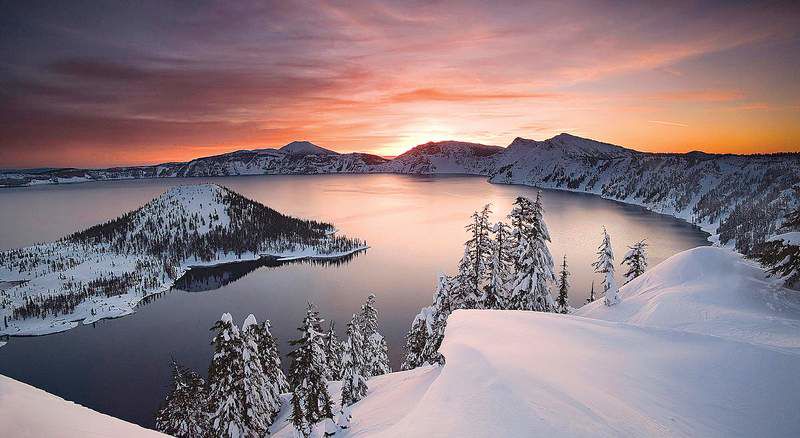Groups push to expand Crater Lake wilderness
Published 5:00 am Saturday, July 30, 2011

- The sun sets behind Crater Lake in January 2006. Environmental groups concerned about logging proposals and the noise from helicopter tours have begun a campaign to expand wilderness areas around the lake.
KLAMATH FALLS — Environmental groups concerned about proposals for logging and helicopter tours near Crater Lake National Park in central Oregon have launched a campaign to expand wilderness areas near the nation’s deepest lake.
Oregon Wild, Environmental Oregon, Umpqua Watersheds and the Crater Lake Institute are among the groups recommending that more than 500,000 acres be designated wilderness in a 90-mile corridor around and in the park, the Herald and News reported.
The total includes 170,000 acres in the park that has been managed as wilderness since the mid-1970s.
Leading Edge Aviation, of Bend, has a pending proposal for helicopter tours while the U.S. Forest Service has timber sales proposed near the park, according to the Klamath Falls newspaper.
The timber sale proposals include the D-Bug sale on the Umpqua National Forest near Diamond and Lemolo lakes north of the park and the Bybee sale on the Rogue River-Siskiyou National Forest west of the park.
“That sort of jarred us. Most people don’t want to see that happen,” said Sean Stevens, communications director for Oregon Wild.
The wilderness legislation could include language specifically preventing such flights, he said.
Various proposals to expand existing and create new wilderness areas in and near the park have been made over the past 30 years.
Crater Lake officials proposed designating most of the park’s undeveloped areas as wilderness in the mid-1970s. Superintendent Craig Ackerman and chief of natural resources Mac Brock said those areas have since been managed as wilderness.
In some cases, timber sales could create concerns because roads built for the sales could increase illegal trespassing by hunters and mushroom pickers, impact owl nesting, and lead to increases in exotic and invasive plant species, he said.
Forest Service lands are managed for multiple uses, with the exception of two wilderness areas adjoining the park, including Sky Lakes in the Fremont-Winema and Rogue River-Siskiyou national forests and Mount Thielsen in the Umpqua, Brock said.
Because of a history of logging and other activities, he doubts some of the lands would qualify as wilderness.
Park biologists review and comment on proposed timber sales and other Forest Service activities that could affect the park.






